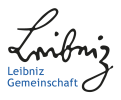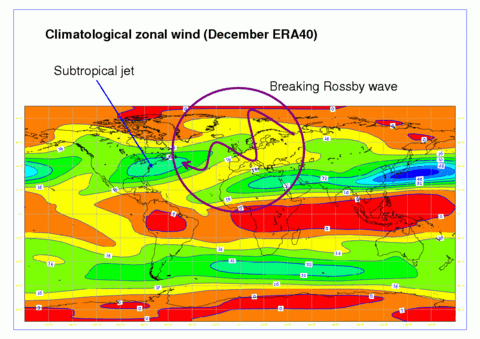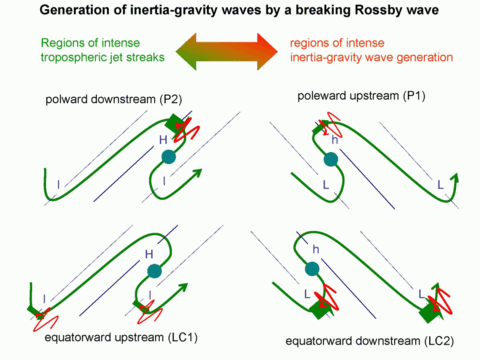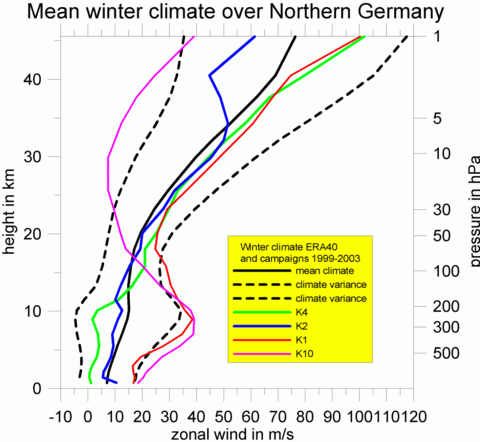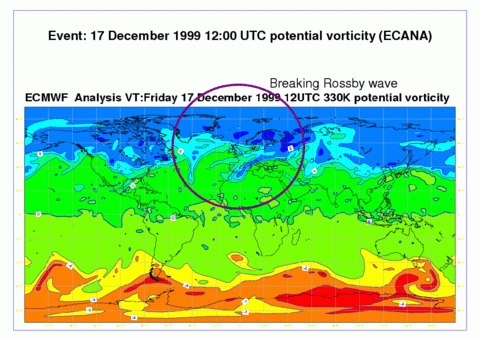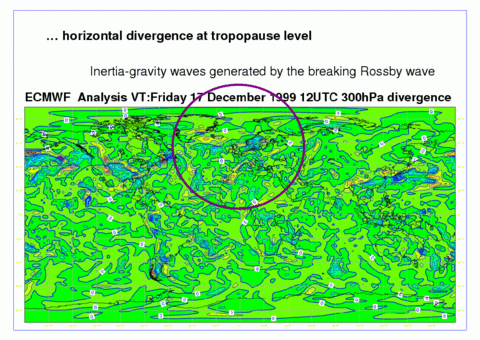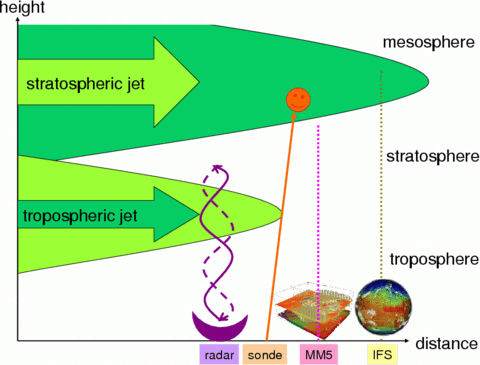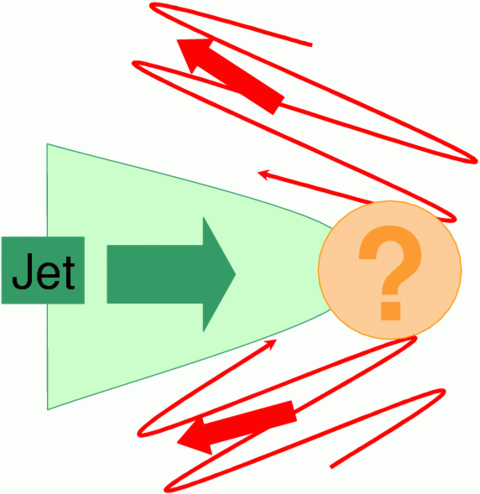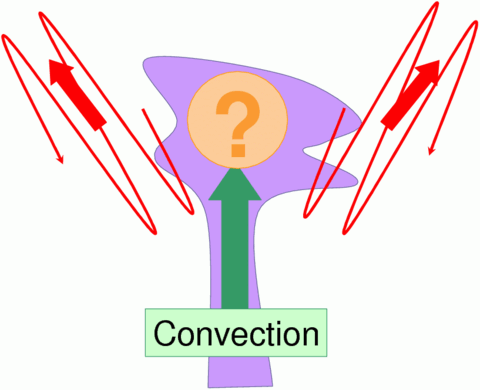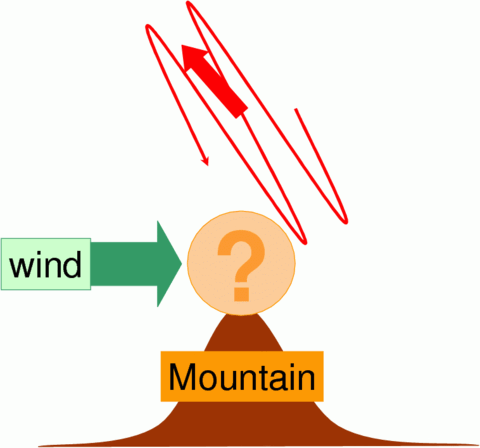Introduction
Polewards breaking Rossby waves (RWB) are frequently observed over Northern Europe during Winter. The following figures illustrate the climatological background of this phenomenon.
Four types of RWB may be distuingueshed - depending on on the dominant direction breaking direction (poleward - equatorward or upstream - downstream; Peters & Waugh, 1996)
RWB are connected with large-scale transports of air masses - the associated wind jets and convection induce the emission of inertia-gravity waves (IGW).
IGWs and RWs transport energy and momentum and influence the dynamics of the atmosphere (extreme weather events, polar stratospheric clouds, ... and the circulation in the mesosphere). General circulation models require a parameterisation of not resolved IGWs. The following figures illustrate the connection between RWB and IGW.
In connection with poleward breaking Rossby waves (Peters and Waugh, 1996, J. Atmos. Sci. 53: 3013-3031) tropospheric wind jets occur on the polar side of a ridge. Downstream of that jet in special regions of troposphere and stratosphere observations and simulations show the appearance of inertia-gravity waves. In the literature (for example O'Sullivan & Dunkerton, 1995, J. Atmos. Sci. 52: 3695-3716; Guest et al., 2000, J. Atmos. Sci. 57, 737 - 752.) the forcing of these waves and their interaction with the polar vortex is associated with many physical processes und not clear yet. The contribution of inertia-gravity waves to the exchange and transport processes in the middle atmosphere is another aspect of the problem.
Aim
Observe, simulate and model the connection between RWB and IGW.
Problems
- generation of IGWs by the tropospheric jet
- interaction of jet-generated IGW with orography and convection
- climatology of RWB and IGW
- parameterization of IGW effects for GCMs
Methods
- Observations
- radiosondes (including ozone)
- VHF radar
- re- and analysis products (DWD-GME, ECMWF-IFS, -ERA40)
- assimilated products (ELDAS, SMHI-MESAN)
- Models
- non-hydrostatic mesoscale model (MM5)
- contour advection
- forecasts (DWD-GME)
Projects
RWB characteristics & climatology
- classification and statistics of breaking Rossby waves --> AFO2000-LEWIZ
- cirrus clouds as indicators for air mass advection by the Rossby wave --> LEWIZ-cirri
IGW generation
- IGW generation in the exit region of tropsopheric jet streaks
- conceptual model --> Pilot-LEWIZ
- aggregated field campaigns --> AFO2000-LEWIZ
- interaction between convection and inertia-gravity waves --> PIGW
- contributions from mountain- and jet-generated inertia-gravity waves --> Matrix-LEWIZ
- observations of IGW from the surface up into the mesosphere with radiosonde, radar, LIDAR and falling spheres launched at Andenes--> ROMA/LEWIZ
-
Privatdozent Dr. habil. Dieter H.W. Peters
+49 (0) 38293 68 380
Navigation
LEWIZ
- Description
- Activities
- Publications
- People

